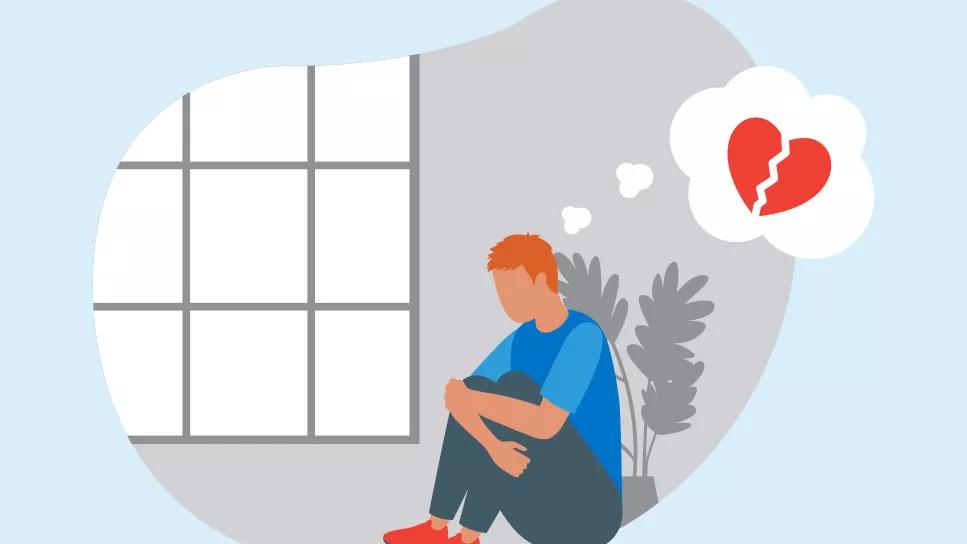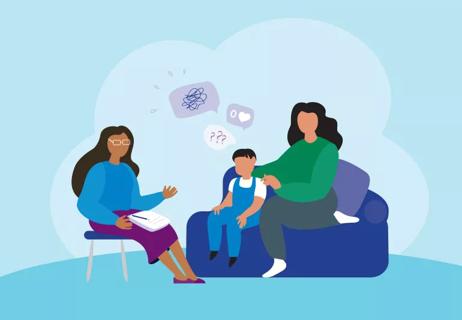Be consistent, practice positive reinforcement, and keep goodbyes short and sweet

Dropping kids off at school, daycare or another family member’s home can feel like the end of the world for some little ones. Sometimes, even putting them to bed can seem like an impossible task when your absence causes your child to burst into emotional fits.
Advertisement
Cleveland Clinic is a non-profit academic medical center. Advertising on our site helps support our mission. We do not endorse non-Cleveland Clinic products or services. Policy
In many cases, separation anxiety is a temporary developmental stage that all children go through from around 9 months old up through 18 months of age. Often, it goes away on its own as your child gains confidence in their independence and gets used to routine departures from caregivers. But if it’s causing consistent distress, daily disturbances and a host of symptoms for more than four weeks, your child may have separation anxiety disorder.
“Most kids can adjust to separation in about five to 10 minutes, but kids with separation anxiety disorder can’t let it go and they keep revisiting it throughout the day,” says pediatrician Heather Sever, DO.
Separation anxiety disorder can affect anyone of any age, including adults, but it’s one of the most common childhood anxiety disorders and is most commonly found in younger children. Researchers estimate that separation anxiety disorder occurs in about 1% to 4% of the general pediatric population. And while it can look different from person to person, there’s a wide range of signs and symptoms that include:
Advertisement
“A 5-year-old may cause a tantrum or cry uncontrollably because they have big emotions and that may be the only way they’re able to express those emotions. But a 10-year-old may appear manipulative by saying they have a bellyache or other physical symptoms,” distinguishes Dr. Sever. “In truth, both children may be experiencing those physical symptoms but they’re unable to express or explain that they don’t feel good because they’re anxious.”
Separation anxiety and separation anxiety disorder in children can be caused by a number of things, from natural developmental reasoning to general anxiety or other mental health conditions, childhood trauma, changes in their environment, family relationships or even a recent move to a new location. But with so many potential causes at such a crucial age for development, how can you help your child through what’s happening so they can rest easy when you’re apart from them?
Dealing with separation anxiety is hard because your first instinct as a parent or caregiver is to soothe your child when they’re upset and undo the hurt by sticking around. But Dr. Sever cautions about being too attached or overly concerned when your child is having a difficult time being away from you during school, at daycare or other significant events when you’re needed elsewhere.
“We have to lead our children toward independence, and you want your child to be able to enjoy whatever activities they’re doing during the times you’re not around,” notes Dr. Sever. “Even though it’s really hard to separate from them, you’re doing the right thing for your child in the long run by helping them become autonomous. If you look at it that way, the short-term pain really translates into a long-term gain.”
Here’s how you can help smooth their transition toward independence and ease their sense of separation anxiety:
Before it becomes time to drop your child off at preschool or kindergarten, schedule play dates with friends and family or arrange for a babysitter for brief practice runs so your child doesn’t feel like they’re being ripped away from you when school starts. Talking with other parents about their experiences and reading about separation anxiety can help, too.
“Even when you’re on the playground, make sure you’re there, but back up so your child has some autonomy to go do things on their own, explore and feel confident they can be on their own,” advises Dr. Sever.
If you’re leaving your child somewhere new (like with a relative, friend or babysitter or at school), it might be helpful to spend some time with your child in that environment so they can familiarize themselves with their surroundings and know they’ll be safe there. It could also be helpful if you give your child a small token that helps them remember you when they’re missing your presence.
Advertisement
“Sometimes, kids just need a little bit of a security blanket,” notes Dr. Sever. “Work with your child to find some small object they can take with them to their new location or something that reminds them of you. Every time they get worried, they can look at or play with that object and that can provide them with some comfort.”
The same can be said for a small spritz of perfume or cologne on the inside of their wrists, as a child’s sense of smell can be particularly motivating. Before doing this, though, try out a small sampler to make sure they don’t have an adverse allergic reaction and don’t overdo it.
If your child has separation anxiety, communicate their behavior patterns and your parenting style with their caregivers and teachers so they know what to expect and how to respond. You also want to communicate clearly with your child by explaining how long you’ll be away from them, when you’ll be coming back and that they’ll indeed see you again. The more consistent you are with what you tell them, the more they can trust that you’ll return and the more they can be comfortable without you being around.
“It could even be helpful to practice the same drop-off rituals daily so your child acclimates to this routine,” says Dr. Sever.
Advertisement
Try to avoid criticizing your child for having difficulty with separation. Relying on negative phrasing like, “Suck it up,” or “Stop being a baby” may cause them to bottle up their feelings instead of processing them, leading to further outbursts. Instead, you’ll want to take a more gentle, positive approach.
“We want to foster a child’s self-esteem and we want to encourage them when they are exhibiting independent behavior,” says Dr. Sever. “If you criticize them, they’re going to want to cling to you more. If there’s a lot of positive reinforcement and you’re excited when they’re able to separate and have a good day, the child gains confidence.”
Forget Midwestern goodbyes. Once you communicate with your child that you’re leaving, don’t circle back or linger longer than you have to.
“When you continue to check in on the child or you prolong your goodbyes, it starts the cycle of separation over again and the child has to separate, not once, but two or three times,” explains Dr. Sever. “Instead, make your goodbyes quick and hopefully, they’ll be able to transition faster.”
In most cases, separation anxiety doesn’t require treatment and goes away on its own as your child becomes more and more confident. But when symptoms are severe and separation anxiety occurs consistently for more than four weeks, you may want to talk to your pediatrician about treatment options that include cognitive behavioral therapy, family therapy, talk therapy and, in more severe cases, medication.
Advertisement
“By working with a child psychologist or behavioral health specialist, you can get at the root causes for what’s leading to that separation anxiety and find healthy ways to help your child cope in the moment as it’s happening,” says Dr. Sever.
Learn more about our editorial process.
Advertisement

A glass child is the sibling of someone with special needs — often seen as the easy one, but carrying invisible burdens

Appetite changes, social isolation, repetitive behaviors and more may indicate that your child is struggling

Golden children often deal with perfectionism, low self-esteem and strained relationships as adults

Think of this behavior as a role reversal between parent and child — when a child takes on responsibility that’s not developmentally appropriate for their age

Tantrums and meltdowns are normal, but you can help your child manage their bigger emotions

American teens are facing unprecedented rates of depression and suicide, but you can be there to support and help them

Unexplained injuries, mood changes and sudden isolation may be signs your child needs help

Be involved in your kid’s care, but be mindful of boundaries

Babies can get congested easily, but you can calm their cough by keeping them hydrated, using nasal drops and running a humidifier

Weight loss may cause loose, sagging skin and muscle loss to your rear

Several conditions, like vitiligo and fungal infection, can cause a loss of pigmentation, leading to white spots or patches on your skin